Radiant Chinese machine and painting machine to them. Frankenstein
You rekvestiroval post with details about the turbulent erotic adventures with the Chinese line pasting boxes. Here he is.
Rate what we are rare cormorants. First look at this photo:
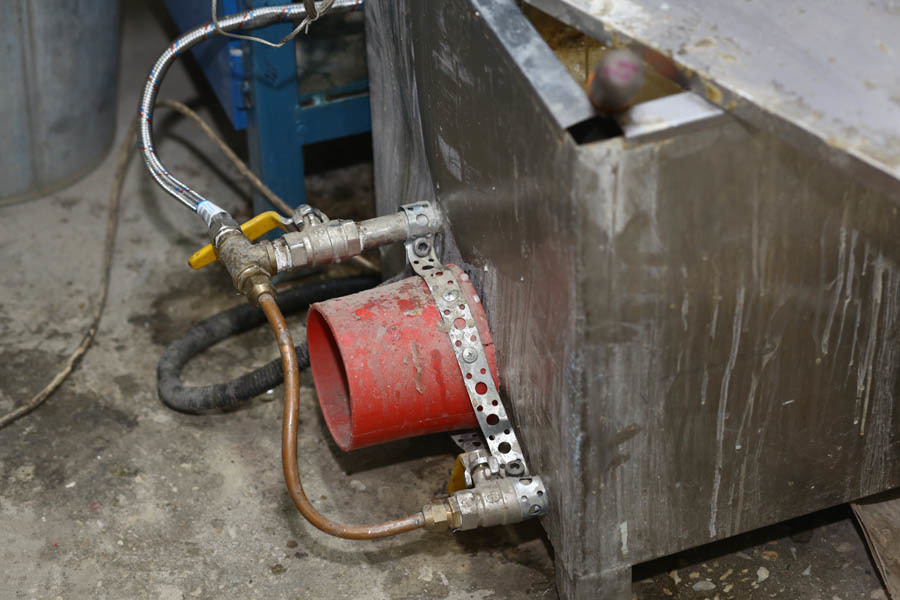
')
This is one of the first upgrades. Under the bucket there is a power relay, a healthy thing that switches the energy of the tank heaters with glue. Chan with glue above. Glue in it, suddenly, boils. And when it splashes - and boiling liquids in general often splash - its streaks fall exactly into this fucking relay. An aqueous solution of glue is a poor but conductor. A short circuit occurs, and all the production gets up.
During the recovery time (as long as the power is supplied, so that there is light, while we remove the relay, while we clean it), the glue in the car has time to harden. And there in the machine dozens of thin tubes, which are clogged tightly.
The sandbox for children solved this problem and stopped the increase in our vocabulary. We laughed and decided that this is a single funny case. Oh, how cruelly we were wrong!
But first, let's go back to 2014, when we were just buying the line. The whole line consists of four parts. The first part bends the corners of the tray (cardboard box base), turning the flat cutting into a three-dimensional "cap", that is, a half-box - a lid or bottom. The second part of the line is a gluing machine, just the one with boiling glue (we used to use the cold one on ordinary hand-held machines). The third part of the line can take a mouthguard from the first machine, a liner plastered with glue from the second machine and stick the liner to the kappa (that is, stick colored paper with inscriptions and all the rest on the cardboard base). The fourth part of the machine bends the valves, that is, it processes the bend points at the edges, in general, turns the half-box into a finished product, which simply needs to be dried.



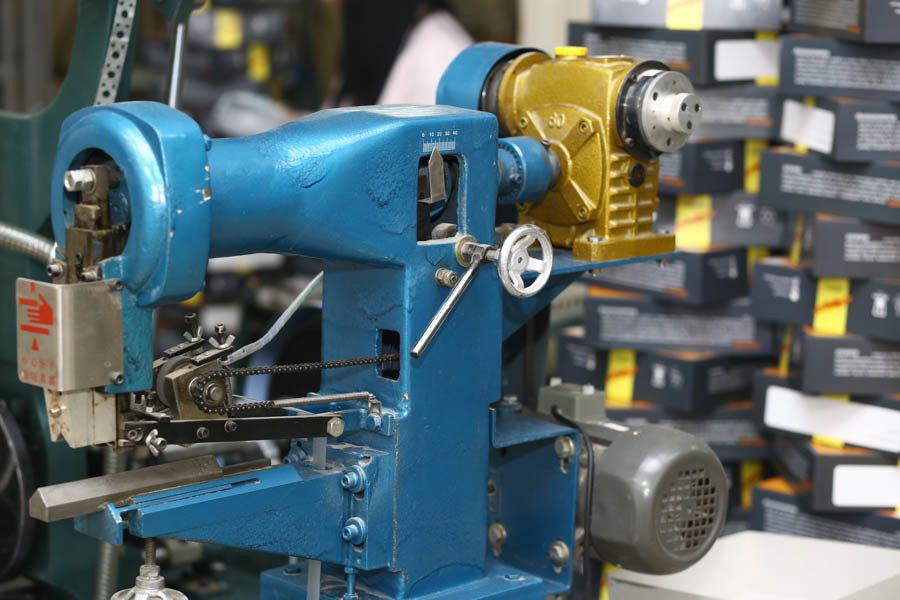

In 2014, we rested on the fact that manual labor in production is very slow and sad, and the narrowest place is just boxes. An experienced collector made 200-300 halves in a 12-hour shift from liner and kappa plastered with cold glue. That is, it was three people: one oppression mouthguard, the second smears the liner, the third imposes them on each other and passes along the sides. The Chinese who sold us the machine promised that the line would make more than 1,500 halves per shift.
The first thing we did was to ask the Chinese to turn on the machine and capture the workflow. The video took about two minutes, during which they managed to do a very dofig boxes. We’ve probably watched it a hundred times to make sure that this line is real, and these are not pre-prepared boxes. It seems everything is OK.
We ordered the part that combines the liner with the kappa - it seems that it is she who gives the most winnings. We thought to take the liner, glue it on a normal glue on a cold glue, put the kappa with the liner on the plastic tray and give it to the standard interface of the third machine.
Did not work. Mainly due to the fact that the liner (a thin paper with a color image) behaved extremely unpredictable. Most often, in the middle of the process, the corners were spontaneously curving (the glue is wet, so they did it). They asked the Chinese what to do. They say it's up to your glue checkpoint. In general, buy a hot glue maker. We bought.
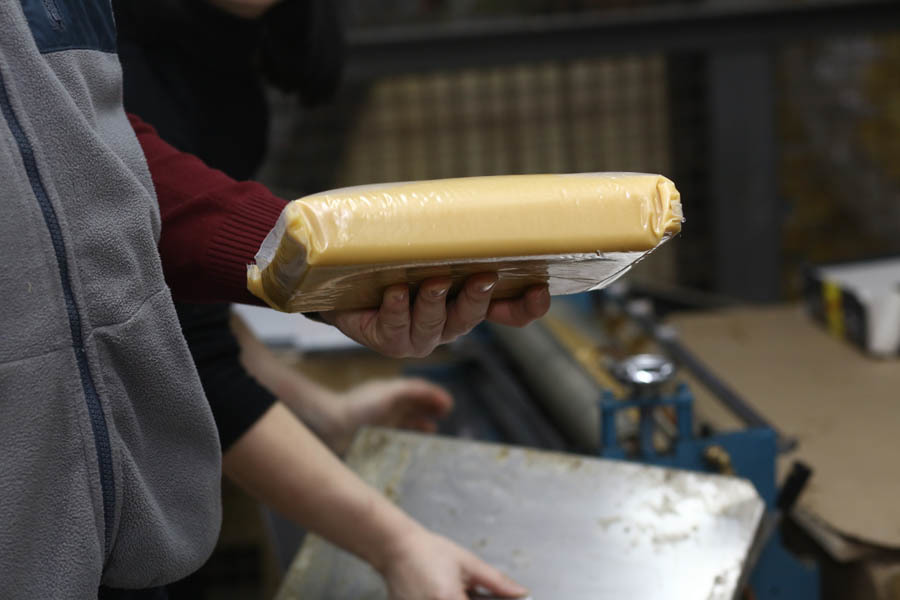
This is the "chicken cube" of glue Modest throws in a hot glue mascot.
Getting started. For two whole days we thought that we were on the right track, because the finished product was leaving the machine with a probability of about 50%. On 10 preparations it turned out five normal boxes and five different marriages. Creatively unique - each defective copy was an independent work of art.

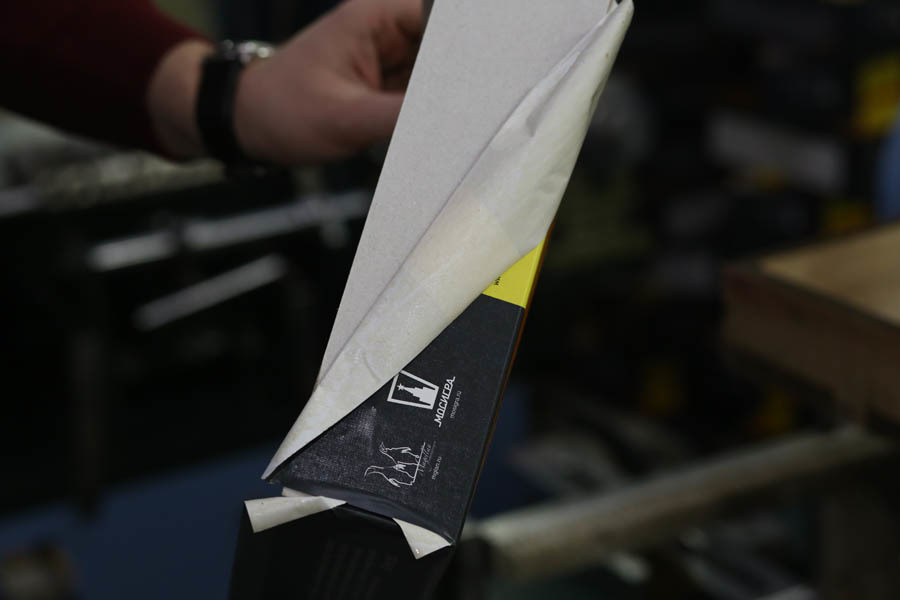
Reproduce good results consistently failed, even though you burst. We decided that the problem was in training the operator (there it is necessary to precisely center the workpiece when serving) - and that we learn. The problem was that the Chinese seemed to have calibrated the machine for their Chinese glue, their Chinese paper, and their Chinese mentality. With a slight change in the parameters, everything immediately collapsed, and the machine turned into a line for the production of unique objects of abstract art.
Important was the viscosity of the adhesive, the thickness of its application to the liner, the setting speed, the material of the paper, its density - and so on. On the third day, we more or less picked up a set of parameters corresponding to what the line was calibrated for. And they were delighted.
But early. Then this animal began to fall apart.
You already know about the bucket. Then the pneumatic hoses began to fly off - they turned out to be very thin, and in the attachment points screwed almost on snot. Then the bed began to rise and fall in jerks.

Then the details began to fly away from the vibrations - the Chinese assembled a "praying mantis" for feeding the box so that all the stresses fell on the thinnest parts of the structure. The machine spontaneously unscrewed the nuts, hinges fell out, and so on.
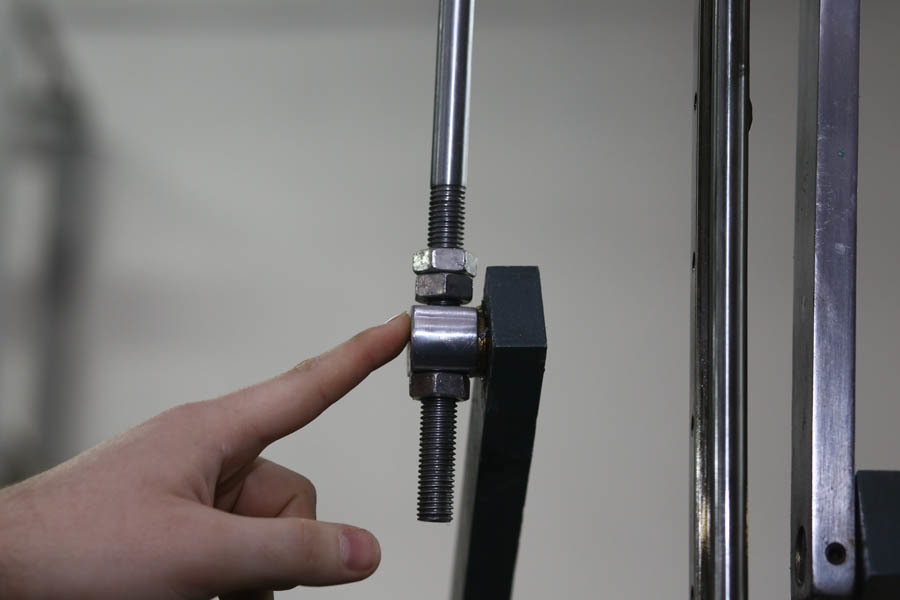
A pump broke for a glue a couple of times (as a result, it was sifted three times). In the first part of the machine there is a system that delivers something like scotch, working at 160 degrees Celsius (not glued at a lower temperature) - this thing broke because it stuck together from the inside. Four times failed heaters heater for glue. Electronics fad with an enviable constancy - Chinese contacts were badly screwed.
Another factor was glue. By varying the components (base and formula, in fact), one can influence its characteristics. We decided to give up hot glue and try other formulations. The logic was that when you stopped the machine would not have to clean it all up. We tried on an acrylate basis (ethylene-vinyl acetate 7: 3 acrylates and other ratios) and our glue for hand pasting (based on EVA). Kostya, the soul of production, he is a chemist by training, ordered a laboratory and conducted a series of tests there. Tried samples in dozens. From one sample, the collector caught a sickly parish and came to complain about the manager's closet. In the end, we picked up the right one, and then, at the end of the epic, we returned to organic hot - as intended by design.
So, the machine broke. The production manager hired a mechanic from a car factory and came up with the following: he, almost in his own home environment, stands near the machine and is waiting for a breakdown. Our shift is working. If something breaks down, the mechanic begins to shamanize. It was assumed that in two months the machine would be healed wherever it could break, and the mechanic would proceed to upgrades to other lines.
After three weeks, we found a shift collecting boxes on the machine manually - they used it as a table:
- What are you doing?
- Well, so quickly.
- Where is the mechanic?
- In Moscow, the application for dismissal took.
In general, the machine drove him crazy, and he left. In a statement, he particularly admired the ingenuity of the Chinese genius and wrote hockey. I do not cite haiku because small children can read the fast. We did not have time to explain to him how Japanese poetry differs from Chinese one.
A week later, the machine became just a city meme among mechanics. They came to the production, looked at him, and then began to laugh.
In one of the mailings to Moscow customers, I briefly described this story and asked to advise good engineers, if you have friends. I found about a dozen contacts, from systemically important — two key expeditions reached production. The first were guys who specialize in machine tools to order. As soon as they saw the line, the laughter already familiar to us began. But since the guys are intellectuals, they could still say a few words:
- Well this is ... the line of 1920!
The diagnosis is euthanasia and the purchase of a new line, they will advise which one. Like, it is easier to collect everything again than to fuck with it.
We decided that this is a way of selling, because, of course, to do everything from scratch and for a long time, and expensive. They called the second group, already professional rescuers of old plants. These laughed a little less, but they asked where we got such a dinosaur. The moral age was determined approximately 1930-1940 year.
It turned out that the line had to be scrapped (we couldn’t sell it - it’s not working!) And buying or making a new one. But they decided to discuss everything again and become conservatives. In our soul a tender love for a Chinese freak began to wake up - it was unprofitable to get rid of it.
After a month of negotiations, the first group decided to modify this Chinese miracle. In July of this year, they took the line - we saw off it with tears in our eyes, like a favorite domestic animal. A month later, they say, give up. They say, we are experienced guys, maybe a couple of weeks, but for a guarantee - a month.
Half a year has passed. We missed a lot, but sometimes we saw each other.
We will take this line in a week. For all this time they disassembled a lot of things there in parts, but, basically, the third machine, sifted through each node. They showed that some moving parts did not even have bearings. Changed there in the third part of everything except the supporting structure. Upgraded a piece - now the liner is not allowed to lose shape by special blowers that gently pick it up with an “anti-gravity field” and prevent it from bending. Put barriers that hold these edges at the liners.
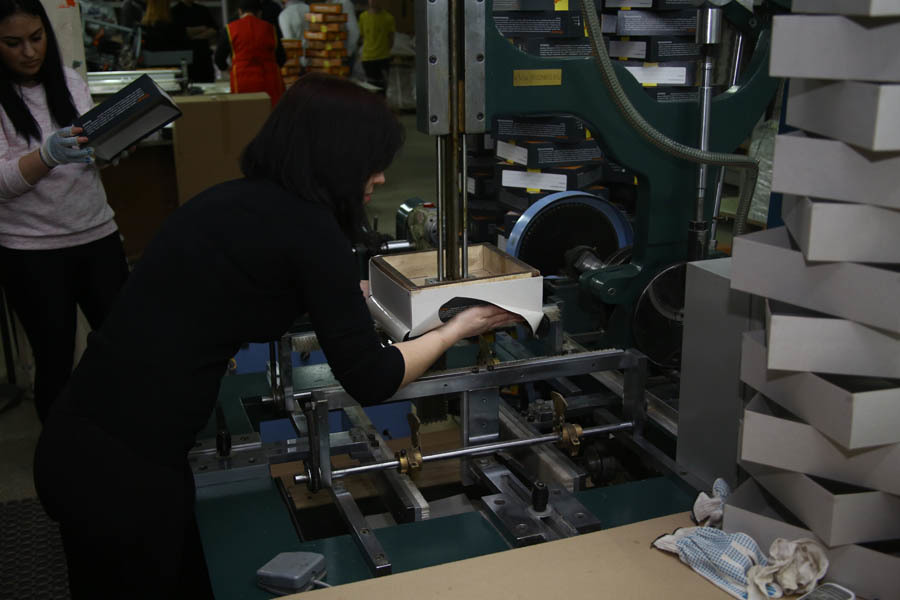
Here now instead of gentle female hands - pneumatic system
As they upgraded, they needed beta tests. We traveled twice a week to work with them. They brought different paper, different glue, different collectors. People portrayed a 4-hour shift in all seriousness, and the guys quickly ran around and twisted something. On one paper it worked, on the other - no. We work, and the guys twist. As a result, they came to the conclusion that it works perfectly on thick paper. 100 boxes - 1 slant, it is even less than with manual assembly. Now we have to carry him back to us, hold your fingers for us.
We started driving around the German factories around 2012, when we really wanted to do a full production cycle in Russia. One of the first things for which extraterrestrial technology is needed is the coloring of wooden figurines. We went on the beaten path - we found the figures that we like, agreed with the industries where they were painted - and went to see how everything happens there. We visited several manufactures in Germany, adopting experience. For the sake of us, even once, they covered a whole line of production with black fabric so that the Russian would not photograph what was superfluous. Then we studied specifications and photos for a long time, trying to understand how this miracle works and how they differ. One of the factories, by the way, was selling its old equipment, and there were already two such machines. But to the question “how do they differ and which one is better”, we were answered with a prepayment for consulting. And the same guy who sold them answered. As a result, it turned out that the machine we needed - the cheapest - cost about two million rubles, including shipping and customs. And it was not clear whether we can quickly pay for it.
The process of torment lasted for about six months, until a character was found who adored AZLK products. The man looked at our torments, looked at the sketches of the machines of the alleged enemy, tried a wooden pirate from "Jackal" on the tooth ... And said that he needed our clothes and motorcycle. More precisely - a washing machine and the wreckage of other household appliances, which we find. Then he locked himself in his workshop and did not go out from there all day. Even for vodka, which, generally speaking, completely ruined his image of "Lefty." This is what the gloomy Russian genius gave birth to, and that we have not shown four years to anyone as know-how:
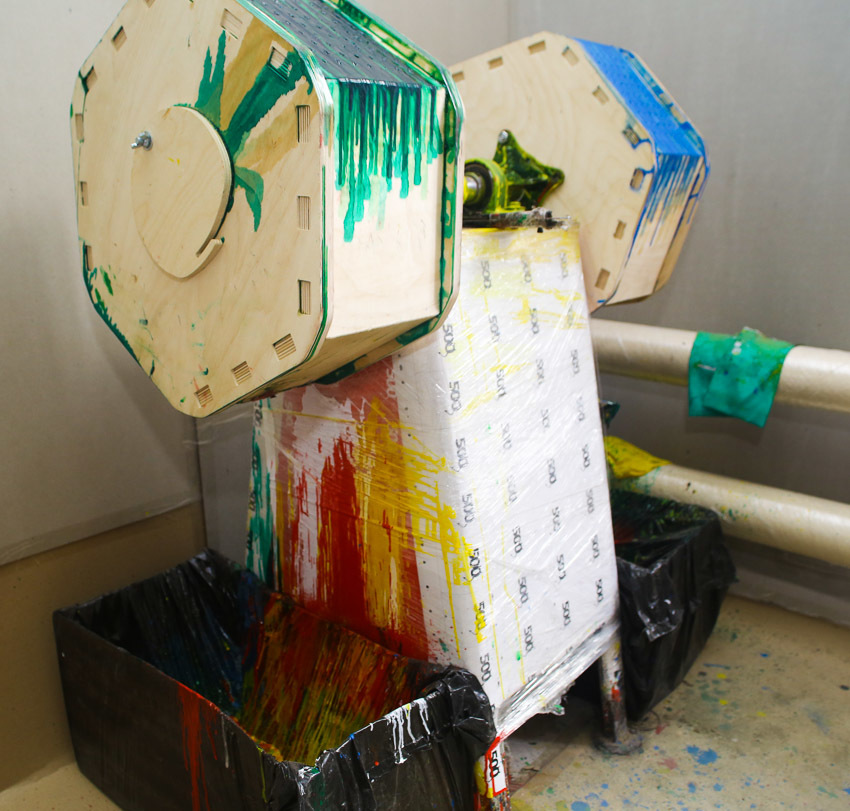
As you can see, everything is simple. There are two drums where the paint is poured, they spin. Inside are wooden soldiers and rub against each other. With the right proportion, rotation and all other conditions, the soldiers come out smooth from there, with an even layer of paint on each other and without any streaks. If you hold such a chip on the table, it does not leave a mark. If you take it in hand - you will not be able to find droplets or traces of undyed surface on it. In general, cool.
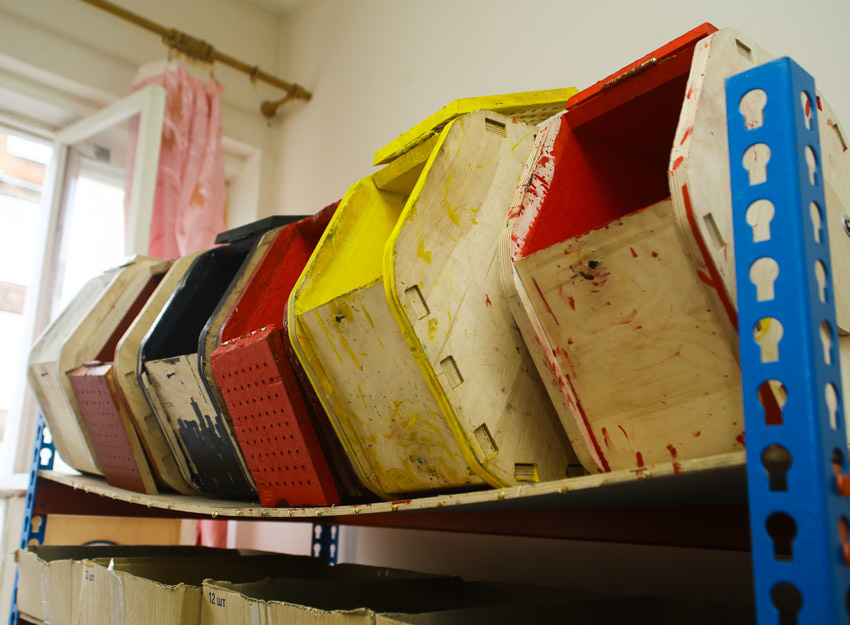
True, this we have come far from immediately. First, a long time picked up the paint. The first batches were ordered from the Germans, and the paint, and pigment, and varnish. Taking into account the delivery, the soldiers turned out to be golden, but even that was worth it compared to delivery from China - there are 2-3 months. At the trial operation, the rejection rate was 35%. We poured bad soldiers into bags, and once we found out that we have 10 potato bags of dreams of any kid from the Soviet Union.
Kostya, our chemist (the one that accidentally cooked a strange glue), undertook to reduce the amount of this marriage. And not at all because we were putting the bags in his office; this is just a coincidence. At first he began to paint - it was important to find the right proportion of paint, pigment and water. And then decide how much to mix soldiers and paint. It turned out that these were not all variables - the speed of rotation of the drum and the duration were also important. After a month of playing in the “Field of Miracles”, the technology gave a stable result.
The next stage of the experiments concerned the paint and varnish itself. Almost a month went on a new series of experiments - I wanted to find paint available in Russia. After going through all the paint from suppliers, they walked through Leroy, and there they accidentally found a suitable one. And then they found where to buy it correctly - and assigned all the necessary proportions to it. Similarly, it turned out with varnish, but only for him in Leroy did not go. As a result, reduced the cost of consumables in 9 times.
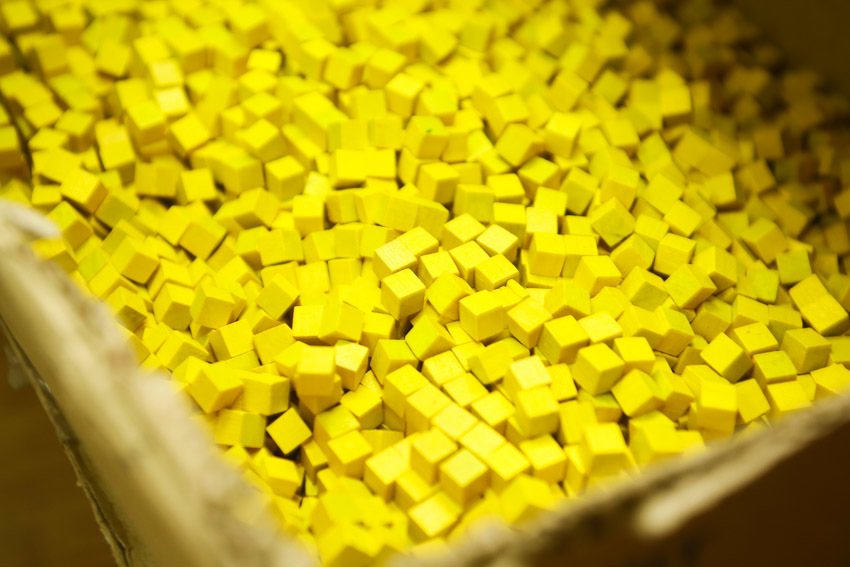
The final of this story was set by the Austrians, who came to the production with an excursion (before a big order) and waited everywhere for a trick. As I have already said, the sight of the Singer industrial zone before the pay and after the rain (with knee-deep mud) reminded them something of militants like "Zaneslo". And they decided that the Russian partners were taking them to wet. The production had a second incident. They turned the chips in their hands, looked at our machine for painting and the operator in a gas mask, then turned the chips again, looked at the machine again ... and asked the translator a question:
- Yakov, are you sure that colleagues show us products of their own production, and not pre-prepared samples?
Everything. Until the end of the requested story. Hope I satisfied your curiosity.
Rate what we are rare cormorants. First look at this photo:

')
This is one of the first upgrades. Under the bucket there is a power relay, a healthy thing that switches the energy of the tank heaters with glue. Chan with glue above. Glue in it, suddenly, boils. And when it splashes - and boiling liquids in general often splash - its streaks fall exactly into this fucking relay. An aqueous solution of glue is a poor but conductor. A short circuit occurs, and all the production gets up.
During the recovery time (as long as the power is supplied, so that there is light, while we remove the relay, while we clean it), the glue in the car has time to harden. And there in the machine dozens of thin tubes, which are clogged tightly.
The sandbox for children solved this problem and stopped the increase in our vocabulary. We laughed and decided that this is a single funny case. Oh, how cruelly we were wrong!
But first, let's go back to 2014, when we were just buying the line. The whole line consists of four parts. The first part bends the corners of the tray (cardboard box base), turning the flat cutting into a three-dimensional "cap", that is, a half-box - a lid or bottom. The second part of the line is a gluing machine, just the one with boiling glue (we used to use the cold one on ordinary hand-held machines). The third part of the line can take a mouthguard from the first machine, a liner plastered with glue from the second machine and stick the liner to the kappa (that is, stick colored paper with inscriptions and all the rest on the cardboard base). The fourth part of the machine bends the valves, that is, it processes the bend points at the edges, in general, turns the half-box into a finished product, which simply needs to be dried.





In 2014, we rested on the fact that manual labor in production is very slow and sad, and the narrowest place is just boxes. An experienced collector made 200-300 halves in a 12-hour shift from liner and kappa plastered with cold glue. That is, it was three people: one oppression mouthguard, the second smears the liner, the third imposes them on each other and passes along the sides. The Chinese who sold us the machine promised that the line would make more than 1,500 halves per shift.
The first thing we did was to ask the Chinese to turn on the machine and capture the workflow. The video took about two minutes, during which they managed to do a very dofig boxes. We’ve probably watched it a hundred times to make sure that this line is real, and these are not pre-prepared boxes. It seems everything is OK.
We ordered the part that combines the liner with the kappa - it seems that it is she who gives the most winnings. We thought to take the liner, glue it on a normal glue on a cold glue, put the kappa with the liner on the plastic tray and give it to the standard interface of the third machine.
Did not work. Mainly due to the fact that the liner (a thin paper with a color image) behaved extremely unpredictable. Most often, in the middle of the process, the corners were spontaneously curving (the glue is wet, so they did it). They asked the Chinese what to do. They say it's up to your glue checkpoint. In general, buy a hot glue maker. We bought.

This is the "chicken cube" of glue Modest throws in a hot glue mascot.
Getting started. For two whole days we thought that we were on the right track, because the finished product was leaving the machine with a probability of about 50%. On 10 preparations it turned out five normal boxes and five different marriages. Creatively unique - each defective copy was an independent work of art.


Reproduce good results consistently failed, even though you burst. We decided that the problem was in training the operator (there it is necessary to precisely center the workpiece when serving) - and that we learn. The problem was that the Chinese seemed to have calibrated the machine for their Chinese glue, their Chinese paper, and their Chinese mentality. With a slight change in the parameters, everything immediately collapsed, and the machine turned into a line for the production of unique objects of abstract art.
Important was the viscosity of the adhesive, the thickness of its application to the liner, the setting speed, the material of the paper, its density - and so on. On the third day, we more or less picked up a set of parameters corresponding to what the line was calibrated for. And they were delighted.
But early. Then this animal began to fall apart.
You already know about the bucket. Then the pneumatic hoses began to fly off - they turned out to be very thin, and in the attachment points screwed almost on snot. Then the bed began to rise and fall in jerks.

Then the details began to fly away from the vibrations - the Chinese assembled a "praying mantis" for feeding the box so that all the stresses fell on the thinnest parts of the structure. The machine spontaneously unscrewed the nuts, hinges fell out, and so on.

A pump broke for a glue a couple of times (as a result, it was sifted three times). In the first part of the machine there is a system that delivers something like scotch, working at 160 degrees Celsius (not glued at a lower temperature) - this thing broke because it stuck together from the inside. Four times failed heaters heater for glue. Electronics fad with an enviable constancy - Chinese contacts were badly screwed.
Another factor was glue. By varying the components (base and formula, in fact), one can influence its characteristics. We decided to give up hot glue and try other formulations. The logic was that when you stopped the machine would not have to clean it all up. We tried on an acrylate basis (ethylene-vinyl acetate 7: 3 acrylates and other ratios) and our glue for hand pasting (based on EVA). Kostya, the soul of production, he is a chemist by training, ordered a laboratory and conducted a series of tests there. Tried samples in dozens. From one sample, the collector caught a sickly parish and came to complain about the manager's closet. In the end, we picked up the right one, and then, at the end of the epic, we returned to organic hot - as intended by design.
So, the machine broke. The production manager hired a mechanic from a car factory and came up with the following: he, almost in his own home environment, stands near the machine and is waiting for a breakdown. Our shift is working. If something breaks down, the mechanic begins to shamanize. It was assumed that in two months the machine would be healed wherever it could break, and the mechanic would proceed to upgrades to other lines.
After three weeks, we found a shift collecting boxes on the machine manually - they used it as a table:
- What are you doing?
- Well, so quickly.
- Where is the mechanic?
- In Moscow, the application for dismissal took.
In general, the machine drove him crazy, and he left. In a statement, he particularly admired the ingenuity of the Chinese genius and wrote hockey. I do not cite haiku because small children can read the fast. We did not have time to explain to him how Japanese poetry differs from Chinese one.
A week later, the machine became just a city meme among mechanics. They came to the production, looked at him, and then began to laugh.
In one of the mailings to Moscow customers, I briefly described this story and asked to advise good engineers, if you have friends. I found about a dozen contacts, from systemically important — two key expeditions reached production. The first were guys who specialize in machine tools to order. As soon as they saw the line, the laughter already familiar to us began. But since the guys are intellectuals, they could still say a few words:
- Well this is ... the line of 1920!
The diagnosis is euthanasia and the purchase of a new line, they will advise which one. Like, it is easier to collect everything again than to fuck with it.
We decided that this is a way of selling, because, of course, to do everything from scratch and for a long time, and expensive. They called the second group, already professional rescuers of old plants. These laughed a little less, but they asked where we got such a dinosaur. The moral age was determined approximately 1930-1940 year.
It turned out that the line had to be scrapped (we couldn’t sell it - it’s not working!) And buying or making a new one. But they decided to discuss everything again and become conservatives. In our soul a tender love for a Chinese freak began to wake up - it was unprofitable to get rid of it.
After a month of negotiations, the first group decided to modify this Chinese miracle. In July of this year, they took the line - we saw off it with tears in our eyes, like a favorite domestic animal. A month later, they say, give up. They say, we are experienced guys, maybe a couple of weeks, but for a guarantee - a month.
Half a year has passed. We missed a lot, but sometimes we saw each other.
We will take this line in a week. For all this time they disassembled a lot of things there in parts, but, basically, the third machine, sifted through each node. They showed that some moving parts did not even have bearings. Changed there in the third part of everything except the supporting structure. Upgraded a piece - now the liner is not allowed to lose shape by special blowers that gently pick it up with an “anti-gravity field” and prevent it from bending. Put barriers that hold these edges at the liners.

Here now instead of gentle female hands - pneumatic system
As they upgraded, they needed beta tests. We traveled twice a week to work with them. They brought different paper, different glue, different collectors. People portrayed a 4-hour shift in all seriousness, and the guys quickly ran around and twisted something. On one paper it worked, on the other - no. We work, and the guys twist. As a result, they came to the conclusion that it works perfectly on thick paper. 100 boxes - 1 slant, it is even less than with manual assembly. Now we have to carry him back to us, hold your fingers for us.
Frankenstein painting machine
We started driving around the German factories around 2012, when we really wanted to do a full production cycle in Russia. One of the first things for which extraterrestrial technology is needed is the coloring of wooden figurines. We went on the beaten path - we found the figures that we like, agreed with the industries where they were painted - and went to see how everything happens there. We visited several manufactures in Germany, adopting experience. For the sake of us, even once, they covered a whole line of production with black fabric so that the Russian would not photograph what was superfluous. Then we studied specifications and photos for a long time, trying to understand how this miracle works and how they differ. One of the factories, by the way, was selling its old equipment, and there were already two such machines. But to the question “how do they differ and which one is better”, we were answered with a prepayment for consulting. And the same guy who sold them answered. As a result, it turned out that the machine we needed - the cheapest - cost about two million rubles, including shipping and customs. And it was not clear whether we can quickly pay for it.
The process of torment lasted for about six months, until a character was found who adored AZLK products. The man looked at our torments, looked at the sketches of the machines of the alleged enemy, tried a wooden pirate from "Jackal" on the tooth ... And said that he needed our clothes and motorcycle. More precisely - a washing machine and the wreckage of other household appliances, which we find. Then he locked himself in his workshop and did not go out from there all day. Even for vodka, which, generally speaking, completely ruined his image of "Lefty." This is what the gloomy Russian genius gave birth to, and that we have not shown four years to anyone as know-how:

As you can see, everything is simple. There are two drums where the paint is poured, they spin. Inside are wooden soldiers and rub against each other. With the right proportion, rotation and all other conditions, the soldiers come out smooth from there, with an even layer of paint on each other and without any streaks. If you hold such a chip on the table, it does not leave a mark. If you take it in hand - you will not be able to find droplets or traces of undyed surface on it. In general, cool.

True, this we have come far from immediately. First, a long time picked up the paint. The first batches were ordered from the Germans, and the paint, and pigment, and varnish. Taking into account the delivery, the soldiers turned out to be golden, but even that was worth it compared to delivery from China - there are 2-3 months. At the trial operation, the rejection rate was 35%. We poured bad soldiers into bags, and once we found out that we have 10 potato bags of dreams of any kid from the Soviet Union.
Kostya, our chemist (the one that accidentally cooked a strange glue), undertook to reduce the amount of this marriage. And not at all because we were putting the bags in his office; this is just a coincidence. At first he began to paint - it was important to find the right proportion of paint, pigment and water. And then decide how much to mix soldiers and paint. It turned out that these were not all variables - the speed of rotation of the drum and the duration were also important. After a month of playing in the “Field of Miracles”, the technology gave a stable result.
The next stage of the experiments concerned the paint and varnish itself. Almost a month went on a new series of experiments - I wanted to find paint available in Russia. After going through all the paint from suppliers, they walked through Leroy, and there they accidentally found a suitable one. And then they found where to buy it correctly - and assigned all the necessary proportions to it. Similarly, it turned out with varnish, but only for him in Leroy did not go. As a result, reduced the cost of consumables in 9 times.

The final of this story was set by the Austrians, who came to the production with an excursion (before a big order) and waited everywhere for a trick. As I have already said, the sight of the Singer industrial zone before the pay and after the rain (with knee-deep mud) reminded them something of militants like "Zaneslo". And they decided that the Russian partners were taking them to wet. The production had a second incident. They turned the chips in their hands, looked at our machine for painting and the operator in a gas mask, then turned the chips again, looked at the machine again ... and asked the translator a question:
- Yakov, are you sure that colleagues show us products of their own production, and not pre-prepared samples?
Everything. Until the end of the requested story. Hope I satisfied your curiosity.
Source: https://habr.com/ru/post/318514/
All Articles